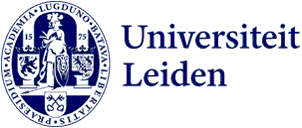
Ad Maas appointed professor by special appointment: 'Exhibiting scientific research is at the cutting edge of museology
On 1 September, Ad Maas, curator of Rijksmuseum Boerhaave, was appointed professor by special appointment. In this role, he will primarily focus on the representation of natural sciences in museums.
From pollution detectors to ECG devices – many of the objects that Maas handles as a curator are not exactly what you would call ‘beautiful’. Some of them aren’t even accessible. And yet it is precisely these objects that are front and centre of the exhibitions Maas curates for Rijksmuseum Boerhaave.
'Scientific heritage is quite stubborn,' says the new professor of Museal Aspects of the Natural Sciences. 'They are tools designed for difficult research, not objects made to please.' Finding attractive, engaging ways to exhibited them is, therefore, quite the challenge. 'Especially if they were actually used in the past, because then we also have to delve into the scientific ideas of the time. We are always exploring ways to do justice to the story of objects that aren't inherently charming – which is why we are used to working at the cutting edge of museology.'
Modern science and social change
This specialist knowledge is precisely why Maas has been asked to join the Museums, Collections and Society stimulus programme, which to date has focused primarily on art history and archaeology. 'I will focus on modern scientific heritage. Modern science is more complicated than ever and is practiced using complicated set-ups or, at the end of the spectrum, very boring mass-produced boxes with plugs. How can you address that in a meaningful way in the museological context? That’s one of the questions I want to reflect on academically.'
To do this, Maas is going to investigate how social changes influence the way museum visitors look at objects. 'Take the artefacts of Nobel laureates, for example. I want to examine how these have been used in our collection, but also in collections throughout the Netherlands, to portray the image of heroes of science.'
Synergy between the University and the city
The idea is that this will create a synergy between the University on the one hand and Rijksmuseum Boerhaave on the other. 'I can use my work here at the University in the museum, and vice versa. Everything just fell into place: the University is keen to strengthen its ties with the city and cultural institutions, museums in particular. I hope people will feel free to get in touch with me if they think the museum will be able to play any kind of role in their pursuits.'
One thing is certain: students will definitely benefit from this new synergy, as Maas will also be involved in teaching. 'I’m really looking forward to introducing them to the challenges and dilemmas of scientific heritage. I think they will be able to learn a lot about how to deal with stubborn material.'
